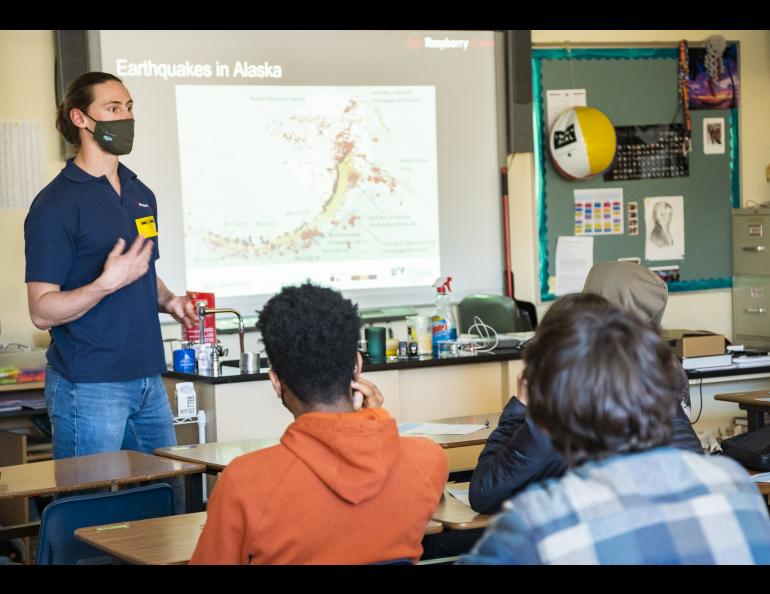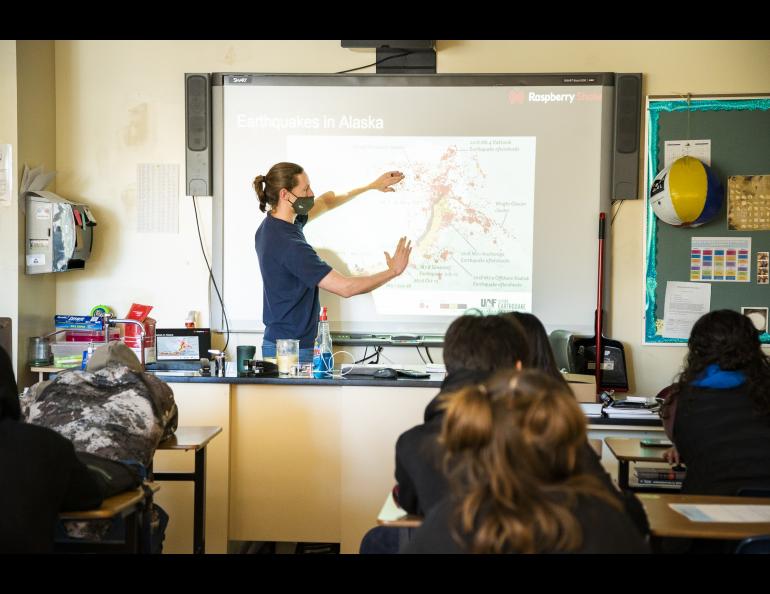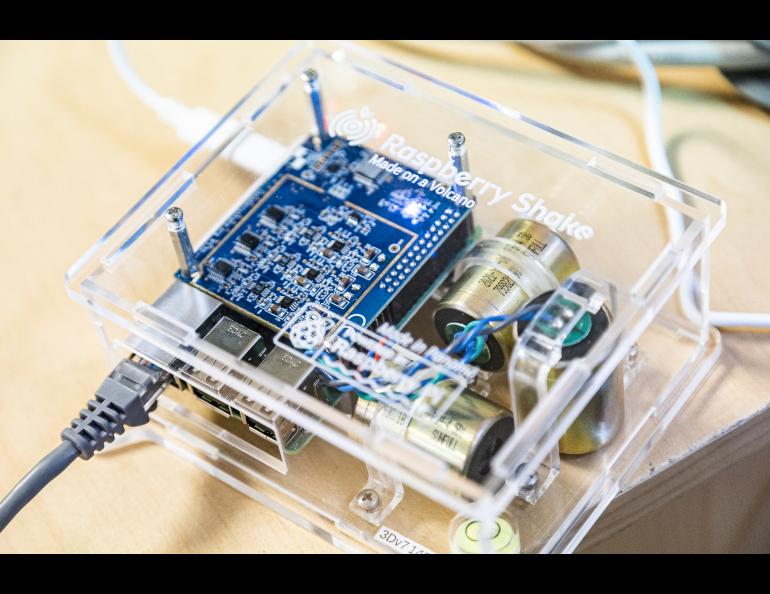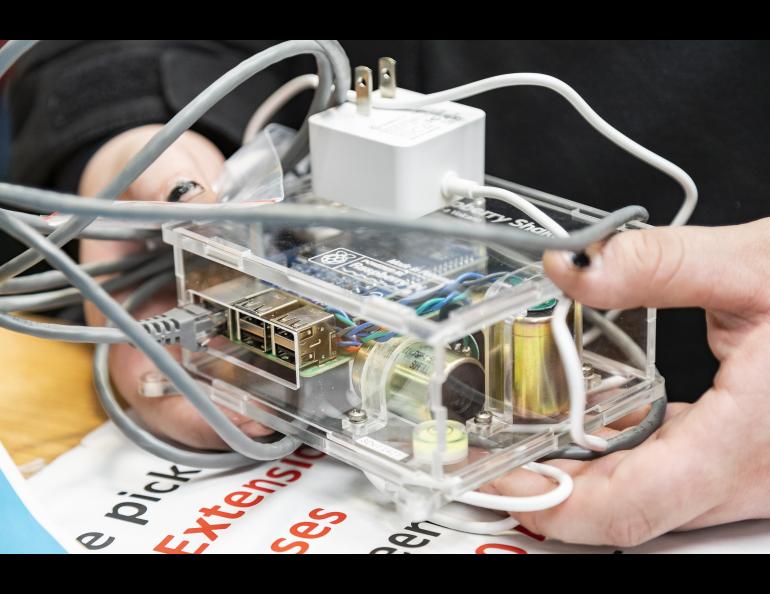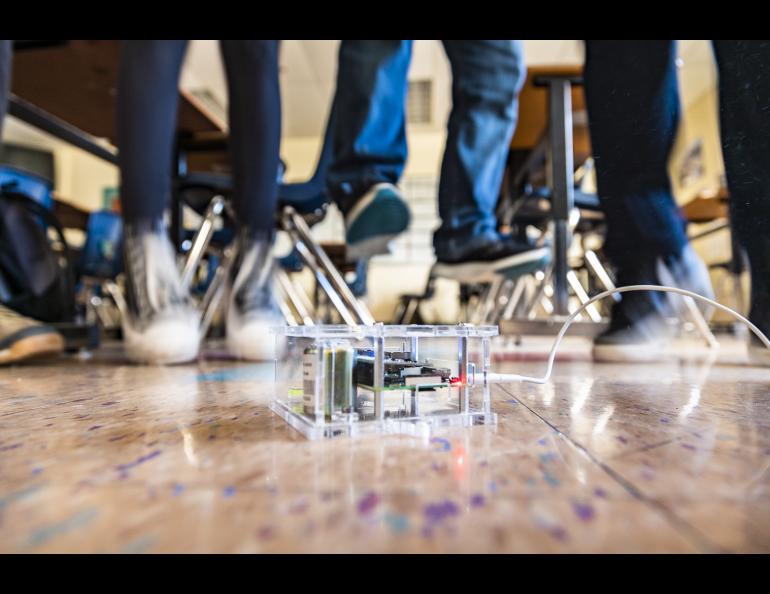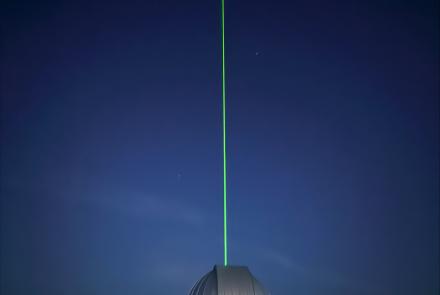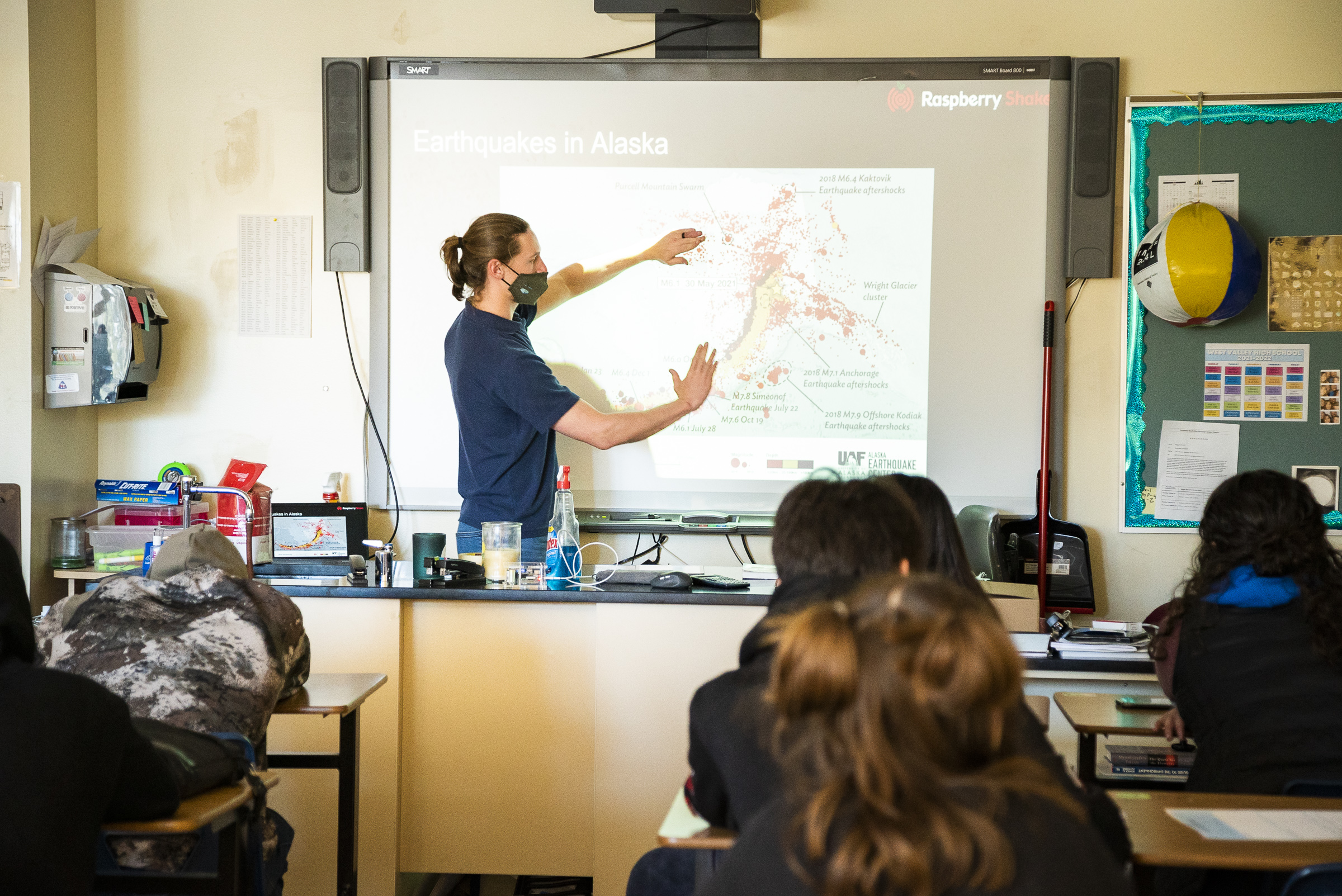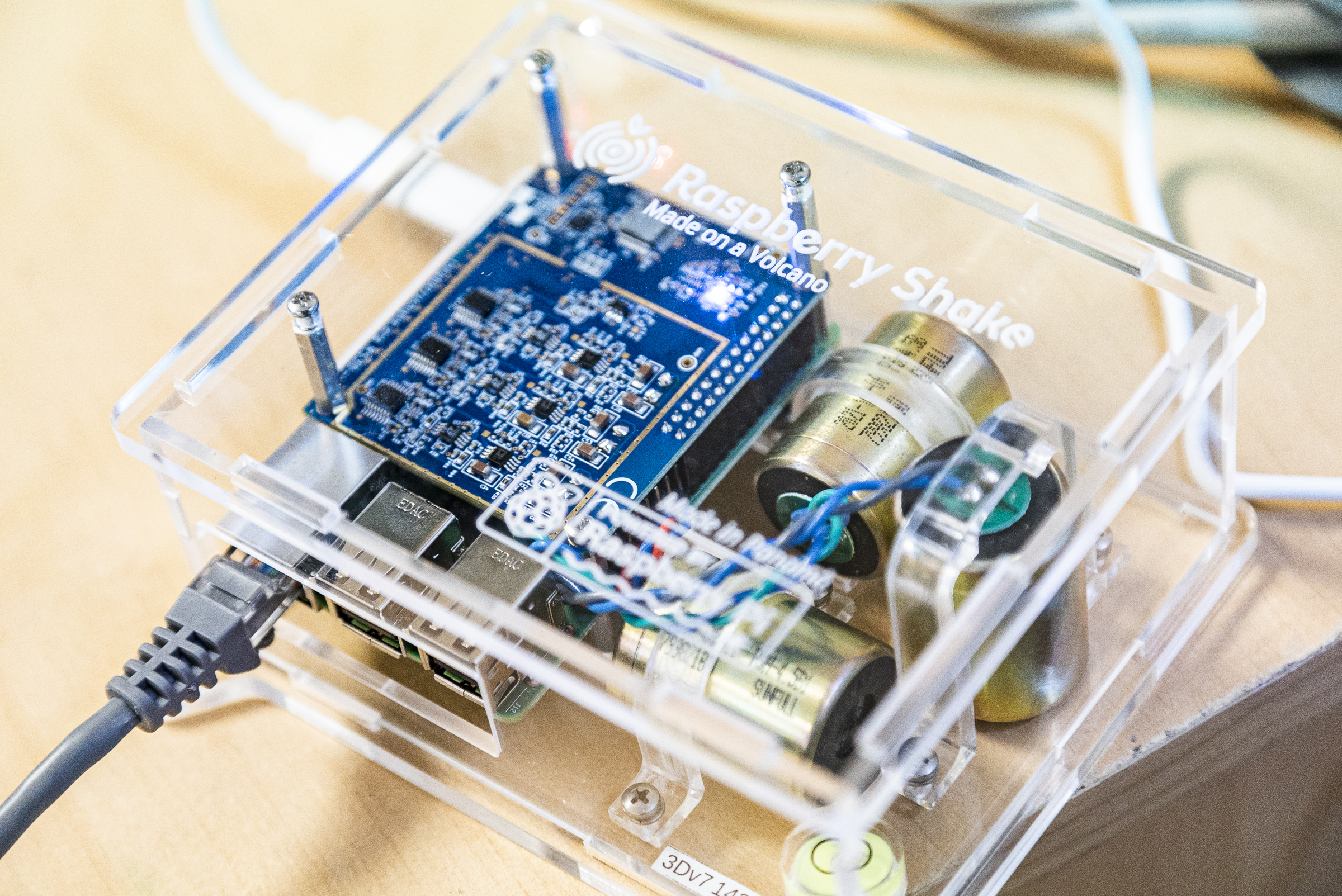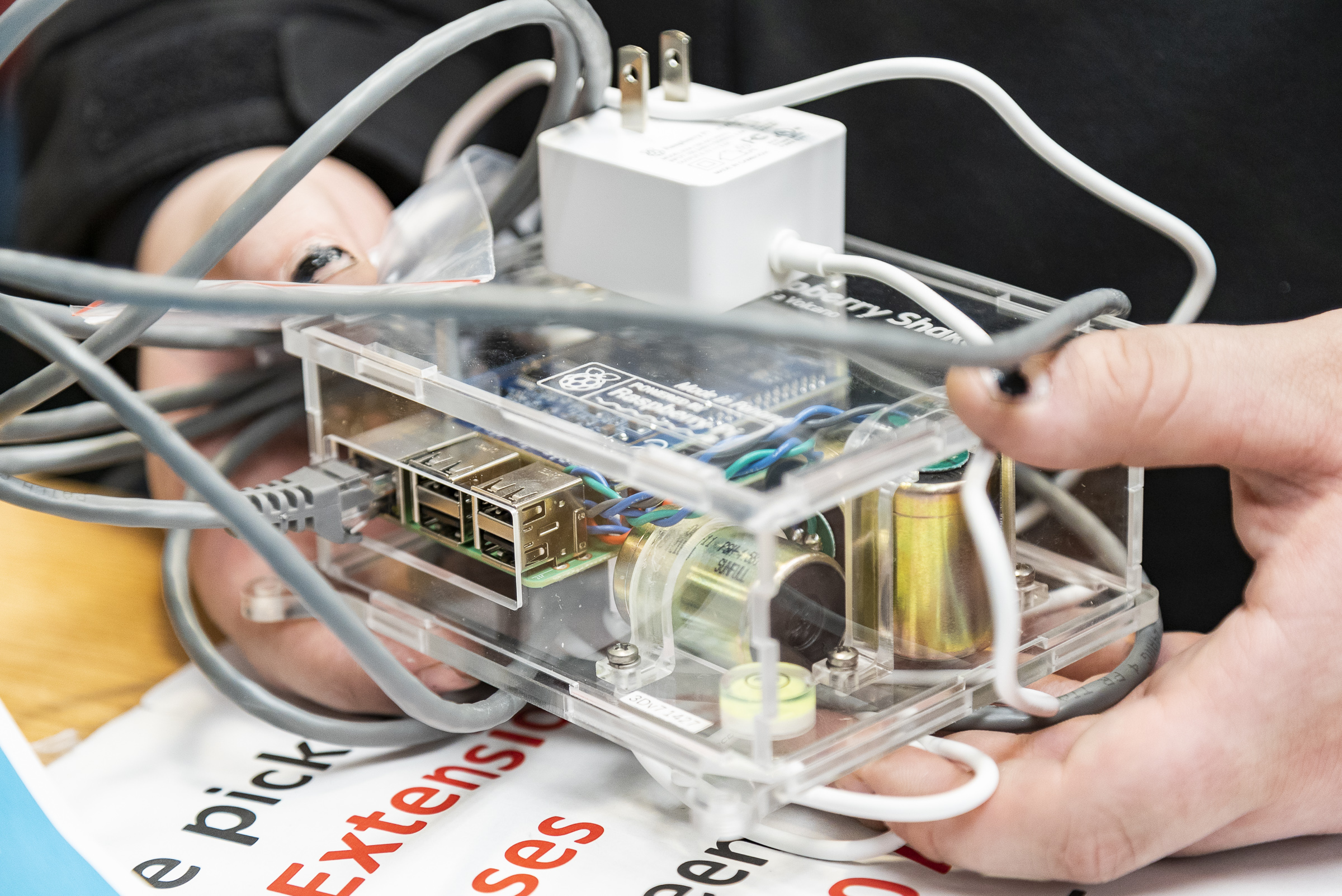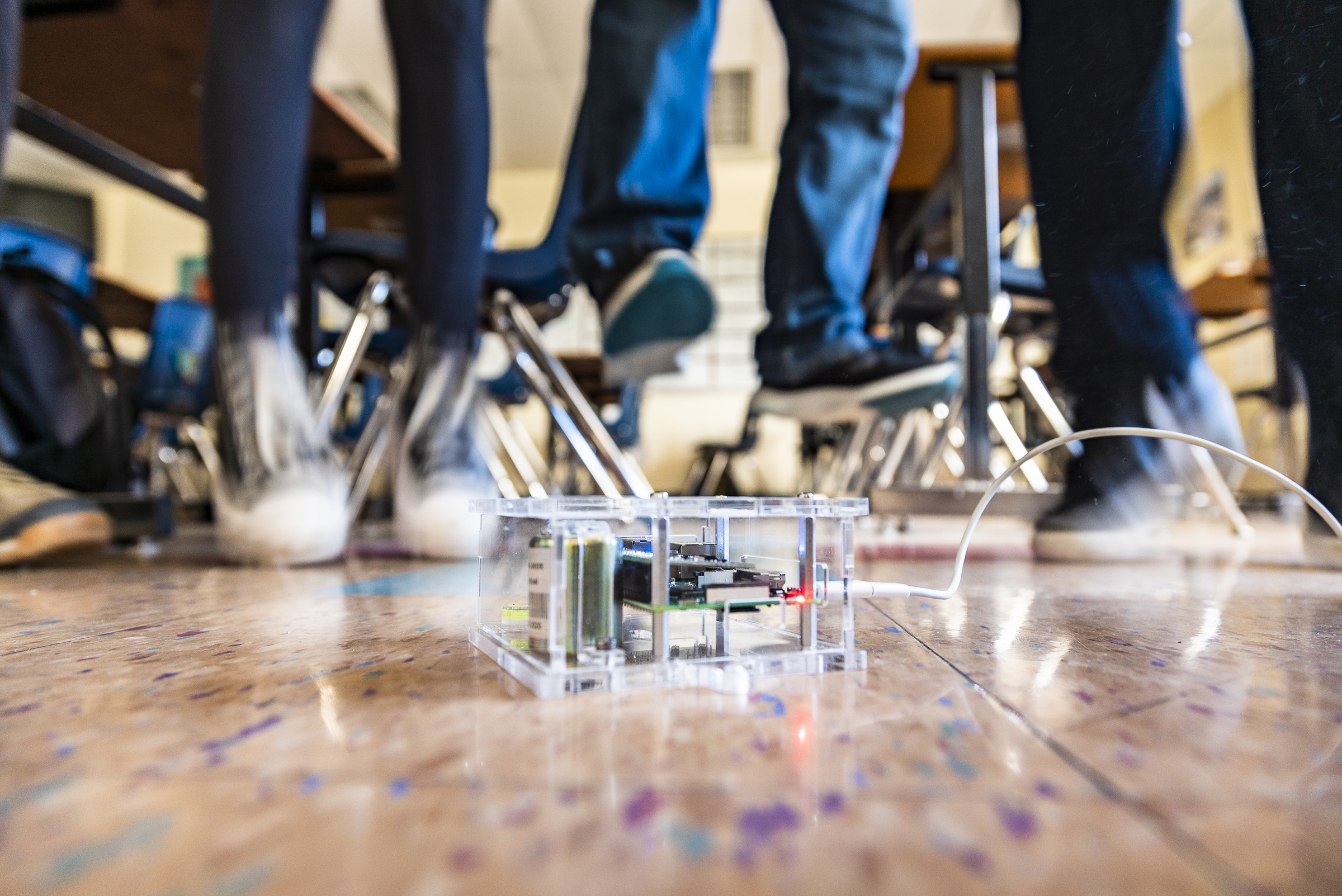In Quinhagak, a village nearly 600 miles from Fairbanks in Southwest Alaska, a small seismometer sits on a corner counter in the classroom of Kuinerrarmiut Elitnaurviat science teacher EJ Dorsey. It quietly records the movements of the Earth’s surface and of people walking nearby.
On its first day of action last year at the school, it recorded the joyous “stomp quake” of the students jumping up and down together to see the real-time computer readout of their new seismometer in action.
“We even got a few ‘aftershocks’ from the classroom next door when we made our stomp quakes,” Dorsey said recently.
It’s all a part of Alaska Seismology in Schools, the brainchild of University of Alaska Fairbanks undergraduate student Gabriel Low.
The aim is to get students interested not just in seismology but in science in general. And it helps do that not only through presentations and lessons but also through ownership by having students install a seismometer and regularly monitor its output.
“The most satisfying part for me as the instructor is to just watch the students be empowered and take it into their own hands,” Low said. “I feel really confident and optimistic about the ability of the students to be the stewards of the seismometers at their schools.”
Low is a senior in UAF’s interdisciplinary studies program, a member of the UAF Honors College and now a full-time Alaska Earthquake Center employee. His career goal is to work in education and community outreach and to collaborate with research organizations to strengthen their community interaction and education objectives.
Alaska Shake Education in Schools came to life in 2021 through the early support of the Alaska Earthquake Center at the UAF Geophysical Institute and a later one-time $25,000 David Simpson Fund for Innovation grant from Incorporated Research Institutions for Seismology, a consortium of more than 100 U.S. universities dedicated to the operation of science facilities that can benefit seismology.
“I can’t think of too many better ways to engage Alaska communities in earthquake awareness,” said Michael West, Alaska Earthquake Center director and state seismologist. “Having been a high school teacher myself, I have witnessed how students can be an entryway to their families and communities.”
What started in 2021 with three schools — in Quinhagak, at West Anchorage High School and at Seward High School — has expanded with the grant funding to West Valley High School in Fairbanks and Hydaburg High School in Southeast Alaska.
Participation by more schools is coming soon. Nome, Shishmaref, Kotzebue, St. Marys and Bethel should be coming online by May, and Low hopes to also bring in Cordova. He’s especially keen to include the Alaska Peninsula communities of Chignik and Perryville. Chignik was the community nearest the epicenter of a magnitude 8.2 earthquake on July 28, 2021.
At each school, Low installs a small consumer-grade seismometer that, when registered, connects to a website that displays an interactive map showing all registered and active monitors produced by the company. That company is Raspberry Shake, whose chief executive officer is 2010 Geophysical Institute master’s student Branden Christensen, who came up with the idea and got it going in 2016 with a Kickstarter campaign.
Students — or anyone — can click on a seismometer’s icon and watch the readings scroll by in real time. The display shows two things: a seismogram, or waveform, that visualizes the velocity of ground motion over time, and a spectrogram, which shows motion intensity at different frequencies over time.
Low makes a presentation to students, introducing them to seismology and seismometers. He brings teacher guides and instructional material so the learning can continue after he leaves.
It’s the stomp quake that gets things going.
“That’s what we start out with in these classes. We have a live waveform and spectrogram displayed behind us from a sensor that’s sitting on the ground, and we say, ‘All right, students, let’s make a stomp quake,’” Low said. “And everybody gets up, and we start stomping our feet and jumping up and down and seeing how much energy we can create.”
“The students just have a great time jumping up and down, understanding the energy they are producing and seeing the live waveforms,” he said.
As the program expands to more schools, Low also plans to introduce a Shake Ambassador Club in which students at schools with a seismometer can meet online monthly to update each other on what their stations have been recording. The club will include an academic competition element, likely to begin this fall.
“We really do want it to be a student-centered experience and allow them to lead it with just our support and facilitation,” he said.
